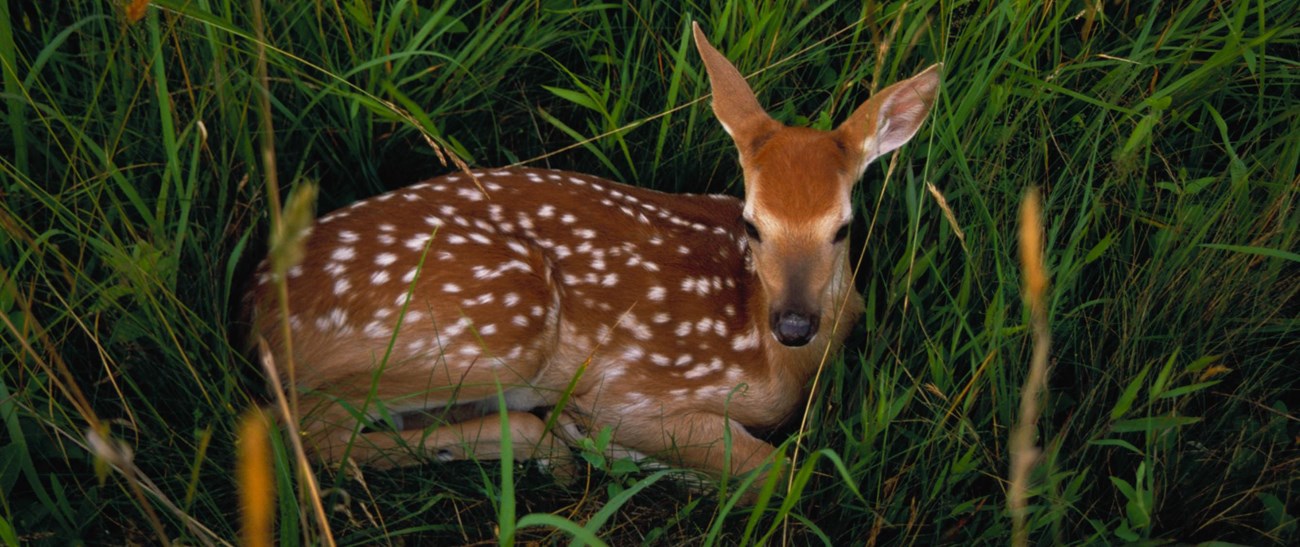Last updated: May 28, 2025
Article
White-tailed Deer Fawns at Valley Forge

Bill Moses
At Valley Forge, white-tailed deer fawns are usually born between mid-May and July, and can sometimes be spotted hiding in tall grass or in woodland areas. It is important to leave these quiet and beautiful creatures alone!
Q: Has a baby deer sitting by itself been "abandoned" by its mother?
A: No! It's just doing what comes naturally!

Bill Moses
Fawn Behavior
White-tailed deer fawns are camouflaged brown with white spots, and have almost no scent. These characteristics help fawns to conceal themselves from predators, and hiding is their primary form of defense. Fawns find their own places to hide, usually in tall grass or in the forest.
In order to prevent drawing attention to their babies, adult female deer do not always remain close. However, the mother deer will return to the fawn's location several times per day to nurse. When approached by a human, the natural response of a fawn is to remain still and silent, lay its head down and try to hide. Even when physically touched, the fawn may not move. Sometimes during periods of high visitation at the park, fawns will not be able to nurse as consistently because the adult female cannot approach safely, and this puts extra stress on the fawns.

NPS Photo / A. Toney
If You See a Fawn
If a fawn doesn't move when you approach, it's trying to hide. Simply leaving the area will make the fawn more comfortable and allow an opportunity for the mother to approach.
Please DO NOT touch or otherwise disturb fawns.
Adult female deer in high density deer herds may be very careful in identifying their own fawns. When a human touches, handles, or otherwise interferes with a fawn—even just walking up to it—the adult female deer will be more careful and take longer to approach and feed their young, and this puts additional stress on both the fawn and mother.
Please do your part as a steward of Valley Forge and leave fawns alone!
